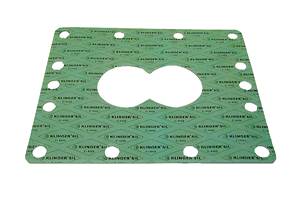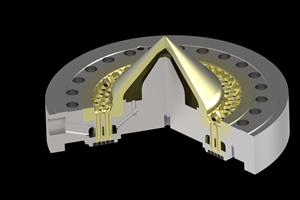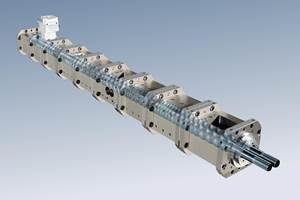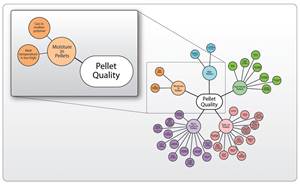Car Production High, Parts Production Slowing
AUTOMOTIVE
Trend is likely to continue through the end of 2016.
Annual motor-vehicle production is still at a historically high rate of just over 17 million vehicles. However, the annual rate peaked in October 2015. The rate of growth, which is more important in forecasting than the current level, has decelerated since June 2012. And other than the huge spike resulting from the financial collapse in 2008, the wholesale inventory-to-sales ratio has risen steadily since September 2014 and is currently at an all-time high. Because of these trends, motor-vehicle and parts production has grown at a decelerating rate since July 2014. That trend is likely to continue over the next six months, at least. Let’s look at some of the leading indicators to see why.
Real 10-Year Treasury Rate. The real 10-yr U.S. Treasury bond interest rate was 0.96% in June 2016, falling below 1% for the first time since April 2015. Since the Fed announced it was raising its overnight rate, the real 10-yr Treasury rate has dropped in each of the last seven months. A significant reason for this is that the rate of inflation, while still low, has picked up since 2015. So, even though the nominal rate has not changed much since February, the real rate continues to fall (the real rate is the nominal rate minus inflation).
Real Motor-Vehicle and Parts Consumer Spending. In May 2016, real motor vehicle and parts spending contracted by 0.7% compared with a year ago. This was the fifth time in the last six months that the month-over-month rate of change contracted. The annual rate of change has grown at a decelerating rate since May 2015. And it will likely contract in the next couple of months. The change in the real 10-yr Treasury rate tends to lead real motor vehicle and parts spending by six to 12 months. Therefore, the annual rate of change should hit bottom sometime between June and December of 2016.
Motor-Vehicle and Parts New Orders. New orders for motor vehicles and parts grew 1.3% in May 2016 compared with a year ago. This was the 18th consecutive month of growth, although it was the weakest month of growth during that period. The annual rate of growth in new orders was still quite positive in May, but it has decelerated since its peak in June 2015. With the inventory-to-sales ratio steadily increasing, it seems likely that new orders will continue to grow at a slower rate and may even contract in the second half of 2016. This would put a damper on future parts production.
Motor-Vehicle and Parts Production. The level of motor-vehicle and parts production is near all-time highs and well above the level prior to the financial collapse. However, in May 2016, production contracted compared with one year ago for the first time since October 2009. That is not surprising, based on the trends mentioned above. The annual rate of change in the production index has grown at a decelerating rate since July 2014 and will likely continue to do so into 2017.
ABOUT THE AUTHOR
Steven Kline Jr. is part of the fourth-generation ownership team of Cincinnati-based Gardner Business Media, which is the publisher of Plastics Technology. He is currently the company’s director of market intelligence. Contact: (513) 527-8800; skline2@gardnerweb.com; gardnerweb.com/economics/blog
Related Content
10 Ways to Improve Twin-Screw Compounding Performance
There are many techniques known to operators and plant engineers for increasing the performance of a twin-screw compounding extruder.
Read MoreHow to Maintain Pelletizing Quality When Acid Attacks
Developments in the chemistry of polymers and additives have made corrosion a real problem in pelletizers. Here’s how to ward it off.
Read MoreHow to Configure Your Twin-Screw Barrel Layout
In twin-screw compounding, most engineers recognize the benefits of being able to configure screw elements. Here’s what you need to know about sequencing barrel sections.
Read MoreThe Path to Pellet Perfection
In underwater pelletizing, numerous variables in the equipment, process and material affect pellet shape, consistency and quality factors such as fines. Defining the “perfect” pellet depends on the conditions of end use, and achieving that ideal requires understanding of the causes of imperfections.
Read MoreRead Next
Processor Turns to AI to Help Keep Machines Humming
At captive processor McConkey, a new generation of artificial intelligence models, highlighted by ChatGPT, is helping it wade through the shortage of skilled labor and keep its production lines churning out good parts.
Read MoreTroubleshooting Screw and Barrel Wear in Extrusion
Extruder screws and barrels will wear over time. If you are seeing a reduction in specific rate and higher discharge temperatures, wear is the likely culprit.
Read MoreHow Polymer Melts in Single-Screw Extruders
Understanding how polymer melts in a single-screw extruder could help you optimize your screw design to eliminate defect-causing solid polymer fragments.
Read More
.JPG;width=70;height=70;mode=crop)






















